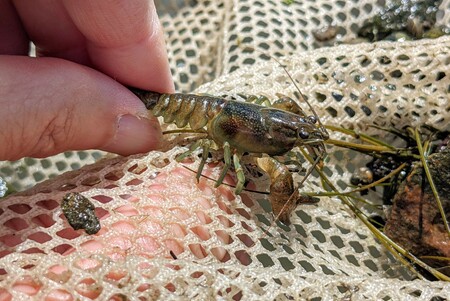
Good Natured: Infamous Hitchhiking Species
Back in the day when hitchhikers were a thing, they were hard to miss. Standing alongside the road, thumb out, with a gaze somewhere between piercing and hopeful, a hitcher's travel plans hinged on the kindness of passing motorists. Many drivers were happy for the company, and many riders were happy to contribute with conversation and a few bucks for gas.
While regulations curbed the number of humans thumbing a lift, alien plants and animals are hitching rides all over the planet.
Last week we learned the Good Natured tale of a snail that stowed away in a shipment of plants from California. The story of sweet Esther Duncan, who will spend the rest of his/her life eating plants in a terrarium in Sycamore, could have taken a disastrous turn had she/he instead landed in a warmer state. Should Esther have escaped into the wild, his/her (remember—snails are hermaphrodites) voracious appetite, and offspring, would have made quick work of the vegetation they encountered.
To provide a more local example, remember what happened when the emerald ash borer showed up in Illinois? The City of St. Charles alone spent millions on the treatment, removal and replacement of infected trees.
First detected in 2002 near Detroit, Agrilus planipennis is thought to have hitched a ride as larvae in lumber used to build shipping crates. Native to temperate northeast Asia, the insect with a taste for ash spread quickly…through more hitchhiking! It took a while for folks to realize that the dead ash trees they were cutting down and using for firewood—often after hauling the logs miles away—were actually aiding the borer's spread.
Another infamous hitchhiking species, European spongy moths (Lymantria dispar, formerly known as gypsy moths), though brought to this country intentionally, sallied their way from East Coast to West via the egg masses females deposited on wood and other objects that were then transported across state lines.
Hitchhiking, though, isn't just the realm of animals. Plants, too, hitchhike plenty. Driving around town, it was disturbingly easy to spot several drifters that have become established right in our own backyards:
- Burdock, Arctium spp., brought here by European settlers, produces seed heads that hitch onto passersby and move short distances and long. (Fun fact: The seeds' recurved hooks are so impressive, they inspired the invention of Velcro.)
- European common reed, Phragmites australis australis (different from subspecies americanus, which is native) came here from Europe in ship ballast. People see it in roadside ditches and alongside ponds and think it's beautiful, but it's actually choking out dozens of native wetland species.
- Garlic mustard, Alliaria petiolate, brought here intentionally as a medicine and an herb, is perfectly capable of spreading its own seeds via air currents. But it also hitches along on humans—especially in the soil trapped in footwear treads—as well as on wildlife.
- Teasel, Dipsacus fullonum, also was introduced on purpose and forms dense colonies. But how's this for a kicker: Its seeds move from place to place by hitching a ride on the equipment used for the plants' control: mower decks.
And don't even get me started in what's in our local waters! Zebra mussels, Dreissena polymorpha, native to eastern Europe and western Russia, rode to the Great Lakes region in ships' ballast water and today are prevalent in the Fox River. Asian clams, Corbicula fluminea, were brought to the US as food but now the microscopic babies (one 1-in. clam can produce 35,000 offspring) hitchhike in bait buckets. Chinese mystery snails, Cipangopaludina chinensis, cling to boat hulls and other water gear. And the rusty crayfish, Faxonius rusticus, traveled here from Ohio as fish bait and continues to threaten native species and habitat with its pugnacious ways.

The few species we have room for in today's column are literally the tip of the iceberg. (Which reminds me…poor Antarctica is being inundated with invaders that hitchhike their way there on ships from 1,500 ports around the world. Read about it here: https://www.bbc.com/news/science-environment-59914729.)
If you find these threats troubling, you're not alone! But the good news is, many agencies are working hard to send these hitchhikers packing. We'll take a look at their efforts, as well as things you too can do, in our next Good Natured installment.
Pam Otto is the outreach ambassador for the St. Charles Park District. She can be reached at potto@stcparks.org.

